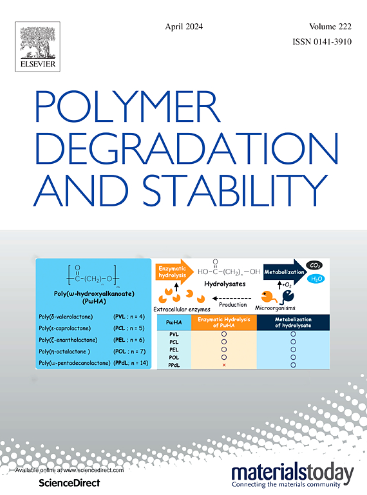Thermal diffusivity of carbon/phenolic composites exposed to harsh hyperthermal environments: theoretical assessment and experimental protocol
IF 6.3
2区 化学
Q1 POLYMER SCIENCE
引用次数: 0
Abstract
Carbon/Phenolic Composites (CPCs) are essential to manufacture many portions of the nozzle assembly of Solid Rocket Motors (SRMs) which are essential both to preserve an independent and responsive access to space as well as for homeland security. In current research, in terms of heat transfer analysis, starting from the assumption of one-dimensional (1D) semi-infinite solid, the analytical solutions of certain selected hyperthermal heating scenarios will be presented, and criteria will be given for their use in solving ablation problems. From the assumption of constant thermo-physical properties, an approach permitting the exact solution of a 1D unsteady heat conduction problem involving variable thermal properties, was introduced and tested for CPCs. Starting from these theoretical results, a method aimed at preliminary retrieving the in-plane and out-plane thermal diffusivity of CPCs through the Oxy-Acetylene Torch (OAT) tests was validated. The proposed approach showed to be effective especially in terms of capability to determine the thermal diffusivity of CPCs at high heating rates. A comprehensive work of comparison of the obtained data with state-of-the-art CPCs such as MX-4926 and FM-5014 was carried out. The proposed protocol can be used not only with hyperthermal sources such as torches, but it can also be extended to other heating devices such as electrical or induction heaters.
求助全文
约1分钟内获得全文
求助全文
来源期刊

Polymer Degradation and Stability
化学-高分子科学
CiteScore
10.10
自引率
10.20%
发文量
325
审稿时长
23 days
期刊介绍:
Polymer Degradation and Stability deals with the degradation reactions and their control which are a major preoccupation of practitioners of the many and diverse aspects of modern polymer technology.
Deteriorative reactions occur during processing, when polymers are subjected to heat, oxygen and mechanical stress, and during the useful life of the materials when oxygen and sunlight are the most important degradative agencies. In more specialised applications, degradation may be induced by high energy radiation, ozone, atmospheric pollutants, mechanical stress, biological action, hydrolysis and many other influences. The mechanisms of these reactions and stabilisation processes must be understood if the technology and application of polymers are to continue to advance. The reporting of investigations of this kind is therefore a major function of this journal.
However there are also new developments in polymer technology in which degradation processes find positive applications. For example, photodegradable plastics are now available, the recycling of polymeric products will become increasingly important, degradation and combustion studies are involved in the definition of the fire hazards which are associated with polymeric materials and the microelectronics industry is vitally dependent upon polymer degradation in the manufacture of its circuitry. Polymer properties may also be improved by processes like curing and grafting, the chemistry of which can be closely related to that which causes physical deterioration in other circumstances.
 求助内容:
求助内容: 应助结果提醒方式:
应助结果提醒方式:


